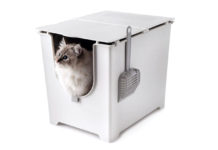It’s hard to know what to focus on when designing a website. SEO (search engine optimization) helps get more visitors to the site, but UX (user experience) is what keeps them there. When it comes to website design, one doesn’t need to be prioritized over the other. In fact, both would impact each other if we were to create a website to get more visitors and increase sales. Read below to learn more about how this works and what you can do to improve your site.
Site Layout and Display
For a good UX, the website’s layout and visuals should be clean. Carefully choose the various elements for the website to make sure they’re easy to view and that they’re going to get the point across to customers. Within the design, include optimization techniques to get more visitors. A good design improves the usability of the visitors and features elements that can help increase the website’s ranking, leading to more views. Professionals who handle eCommerce app development can help make sure both UX and SEO are included in the website’s design, ensuring the site is easy to view but still includes keywords and other elements that will optimize it further.
Responsiveness of the Site
Responsive websites are able to be viewed on any device, no matter the screen size. These websites automatically adjust to meet the needs of the device, making it easier for visitors to view the site on their computer, tablet, or smartphone. This benefits both UX and SEO. User experience is boosted because visitors can view the website on any device and won’t have to squint or try to zoom in on smaller devices. SEO is boosted because search engines prioritize websites that make it easier for visitors to get information. If the website can be viewed on any device, it’s likely to be ranked higher, leading to more visitors on just about any type of mobile device.
Faster Loading Speeds
Like the responsiveness, faster loading speeds can help UX and SEO. When a website loads slowly, visitors can get frustrated. Statistics show that loading slowly makes it more likely the visitor will look somewhere else for what they need. This has a huge impact on the UX, as it can turn many visitors away before they’ve even seen what the website looks like. Around 13% of these visitors will never go back to the website. For SEO, websites that load slowly are ranked lower. Since visitors will be unhappy and less likely to find what they need, search engines don’t want to rank them highly and cause more visitors to click on them.
Navigation of the Website
How easy is the website to navigate? The menu button should be easy to find on the website and should include categories of products that make sense for the average user. Better navigation improves UX because it helps customers find what they need. Improved navigation also helps the SEO of the site because it helps keep the visitors on the site longer. When visitors stay longer, search engines assume that the site has the right information for visitors. This leads to the website ranking higher, so more potential visitors will see it.
Scaling the Website
Scaling the website may need to be done to add new products or content. Being able to easily scale up is indicative of quality UX design and can help with optimization. When new pages are added, they should follow the same layout and design as existing pages. With the right UX, it’s easy to add new pages and make sure visitors can find them. As new pages are added, new keywords can be used to help the website rank higher for more potential searches, boosting how many visitors will be able to see the site. Websites can be scaled a little at a time or a lot at once, but the ease in scalability is what makes a difference with UX and SEO.
UX and SEO are both very different, but that doesn’t mean having to choose only one to focus on. A lot of the design elements of a website can impact UX and SEO, and there are some ways that one can change the other. Use the information here to make sure you’re focusing on both of them when designing a new website or redesigning a current website. That way, you can make sure visitors can find the website and then find everything they need to make a purchase.







